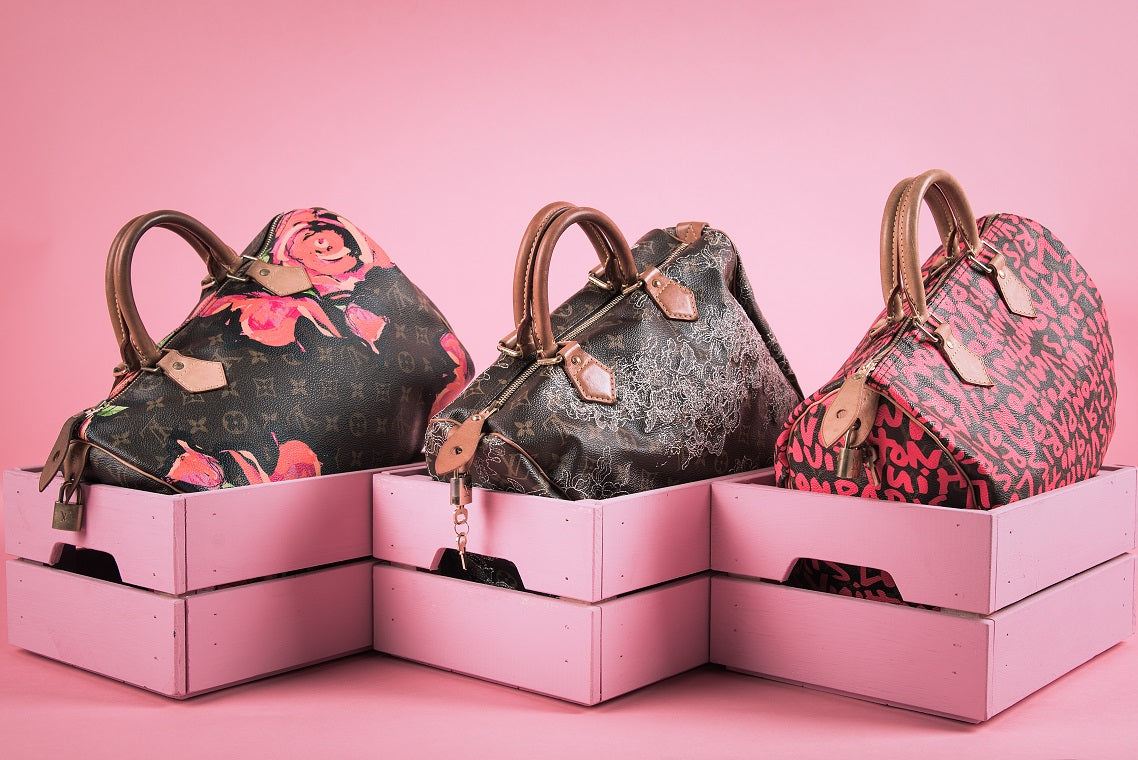
Every big fashion brand claims they're now sustainable. Is it true? How do you shop sustainable fashion to make a change?
Sustainable fashion is a rapidly growing movement that aims to reduce the environmental impact of the fashion industry. It encompasses a broad range of practices, including the use of environmentally-friendly materials, fair labor practices, and reducing waste in the production process.
5 Reasons to Shop Sustainable Fashion
Shopping sustainable fashion offers numerous advantages for customers, fashion companies and the planet.

Reduce the Environmental Impact
Firstly, shopping sustainable fashion helps to combat climate change and protect the environment. The fashion industry is known to contribute significantly to greenhouse gas emissions, deforestation, and water pollution. Check out our 68 fast fashion facts tBy choosing sustainable fashion, you can actively contribute to reducing the environmental impact of the fashion industry, one of the major contributors of CO2, while also supporting ethical practices and enjoying unique garments.
By choosing sustainable brands that prioritize eco-friendly production processes, use renewable energy sources, and reduce waste and carbon emissions, you can help mitigate these damaging effects on the environment.
Support Ethical Labor
Secondly, sustainable fashion promotes ethical labor practices and fair wages for workers in the fashion industry. Many fast-fashion brands exploit laborers in developing countries, subjecting them to poor working conditions and inadequate wages. By supporting sustainable fashion brands that prioritize fair labor practices and provide safe working conditions, you are helping to ensure the well-being and livelihoods of garment workers.
Prolong the Garment's Lifespan
Another benefit of shopping sustainable fashion is that it encourages the use of high-quality materials and craftsmanship, resulting in longer-lasting garments. Sustainable fashion brands often use durable materials and prioritize timeless designs, allowing their products to withstand the test of time. By investing in quality pieces that will last, you can build a versatile and long-lasting wardrobe while reducing the need for constant replacements.
Be Different
Shopping sustainably allows you to express your personal style while still being mindful of the environment. Sustainable fashion brands often offer a wide range of creative and unique designs, allowing you to make fashion choices that align with your values without compromising your style preferences. You can find sustainable alternatives for various fashion items, ranging from everyday basics to formal wear and accessories.
Better Clothing Quality
Lastly, opting for sustainable fashion can also have financial benefits. While sustainable clothing may appear more expensive upfront, the long-lasting quality and durability of these garments can save you money in the long run. By investing in timeless pieces that won't go out of style, you minimize the need to constantly update your wardrobe, ultimately reducing your overall fashion expenses.
In conclusion, shopping sustainable fashion allows you to make a positive impact on the environment, support ethical labor practices, enjoy long-lasting and high-quality garments, express your personal style, and even save money in the long run. By making conscious choices and supporting sustainable fashion brands, you contribute to a more sustainable and ethical fashion industry for the future.
How to Shop Sustainable Fashion To Make a Real Change

As consumers, we have the power to influence the fashion industry by making mindful purchasing decisions and supporting sustainable fashion brands. In this ethical shopping guide, we'll be sharing tips and recommendations on how to shop sustainable fashion.
Step 1. Research Before Buying
A lot of brands claim they're sustainable. However, there are different aspects of sustainability and some brands are launching much more initiatives than others. Here's what you need to to before purchasing a new piece of clothing to make sure you're supporting the brand that really makes a change.
Educate yourself
The problem with sustainable fashion is that even fast-fashion brands like H&M, Uniqlo and Zara are introducing measures to reduce the environmental impact. When you go to the mall, it's difficult to distinguish between the fast fashion brands and eco-conscious brands.
The first step in practicing sustainable fashion is to know which brands are sustainable and which are not. Check sustainable fashion brands that prioritize sustainability in their production processes, use eco-friendly materials, and have a transparent supply chain. The Good Trade is a great resource for researching sustainable fashion brands. Their website features a directory of brands that are committed to sustainable and ethical practices.
Be mindful of your purchases
It's interesting that sustainable brands will sometimes make you question the volume of your shopping. A few years back, Patagonia launched “Don't Buy This Jacket” campaign. It featured a full-page ad in The New York Times on Black Friday, one of the busiest shopping days of the year. The ad displayed an image of one of Patagonia's jackets along with the message "Don't Buy This Jacket". The purpose of the campaign was to raise awareness about the environmental impact of consumerism and encourage customers to think twice before making a purchase.
Before buying a new piece of clothing, ask yourself if you really need it. Consider the environmental impact of the production process and the lifespan of the item. A useful tip would be to sort your existing wardrobe to understand how many clothing pieces you wear on a daily basis. By only buying what you need, you can reduce the number of items in your wardrobe, decrease your environmental impact, and save money.
Look for eco-friendly materials
Look for clothing made from eco-friendly materials like organic cotton, linen, and Tencel. These materials have a lower environmental impact than conventionally grown cotton and other synthetic materials. Sustainable clothing companies like Patagonia and Reformation use eco-friendly materials and have a commitment to sustainability in their production processes, but they're not the only ones.
Step 2. Adjust Your Buying Habits
A lot of people believe that There are several habits you might want to implement that will ensure that you're actually helping the environment.
Buy timeless pieces in neutral colors
A lot of sustainable brands are focused on producing clothing in neutral colors, and there's a good reason behind it.
Classic, timeless pieces will never go out of style and can be worn for many seasons. Fast fashion trends are often cheaply made and are designed to be worn for only a short time. In addition, they often used colors that are only popular within a particular season. By investing in timeless pieces, you'll be creating a sustainable wardrobe that will last beyond current fashion trends.
A good idea might be to hire a stylist once to set your color palette. If you know what colors go well with your built and appearance, you will be more sure that you will actually wear the new clothing piece you're buying today.
Buy secondhand
Buying secondhand clothing is one of the easiest ways to shop sustainably. By purchasing clothing that has already been made, you're reducing the demand for new products to be produced. You can find secondhand clothing at thrift stores, vintage shops, and online marketplaces like Fashionphile. Secondhand shopping is not only sustainable, but it's also budget-friendly, as it allows you to save over 70% of the brands' retail prices.
When you shop preloved designer items from Louis Vuitton, Chanel, Hermes, Dior, don't forget to authenticate them to make sure you're getting what you're paying for.
Choose better longevity over price
There's a very popular myth that sustainable clothing is expensive. A top from an eco-friendly brand might cost twice as much as a fast fashion top.
An upfront price of an eco-conscious apparel brand might be higher, however, before making this statement, take longevity into the account.
Look for clothes that have longevity. Classic and versatile designs can be worn for years, which reduces the need to constantly buy new clothing. In addition, opt for timeless neutral colors that can be dressed up or down and mix and matched with other items in your wardrobe.
Step 3. Prolong the Life of Your Clothes
Once you have selected and purchased a new piece of clothing, there are some steps you can make to prolong their life. Here are some tips.
Mend and repair clothing
Instead of throwing away clothes with minor damage, try to mend and repair them. Small repairs can be done easily at home, or you can take the clothing to a tailor. By repairing your clothing instead of throwing it away, you're reducing waste and extending the lifespan of the garment.
Avoid dry cleaning
Dry cleaning is an environmentally damaging process that uses toxic chemicals. Try to avoid buying clothes that require dry cleaning, or find a more eco-friendly dry cleaning alternative. You can also wash clothes at home using gentle detergents and hang them to air dry.
Donate and recycle clothing
When it's time to part ways with clothing, consider donating it to a thrift store or clothing swap. If the clothing is beyond repair, look for recycling programs that can turn the material into new products. Clothing recycling programs are available at select stores, including even fast fashion behemoths like H&M and Zara.
Summary: Shopping Sustainable Fashion Is Not Difficult
In conclusion, sustainable fashion is an important movement that aims to reduce the environmental impact of the fashion industry. As consumers, we have the power to shape the industry by making mindful purchasing decisions and supporting sustainable fashion brands. By doing our research, buying high-quality clothing, shopping secondhand, and supporting eco-friendly and ethical brands, we can create a sustainable wardrobe that reduces waste and has a positive impact on the environment.






